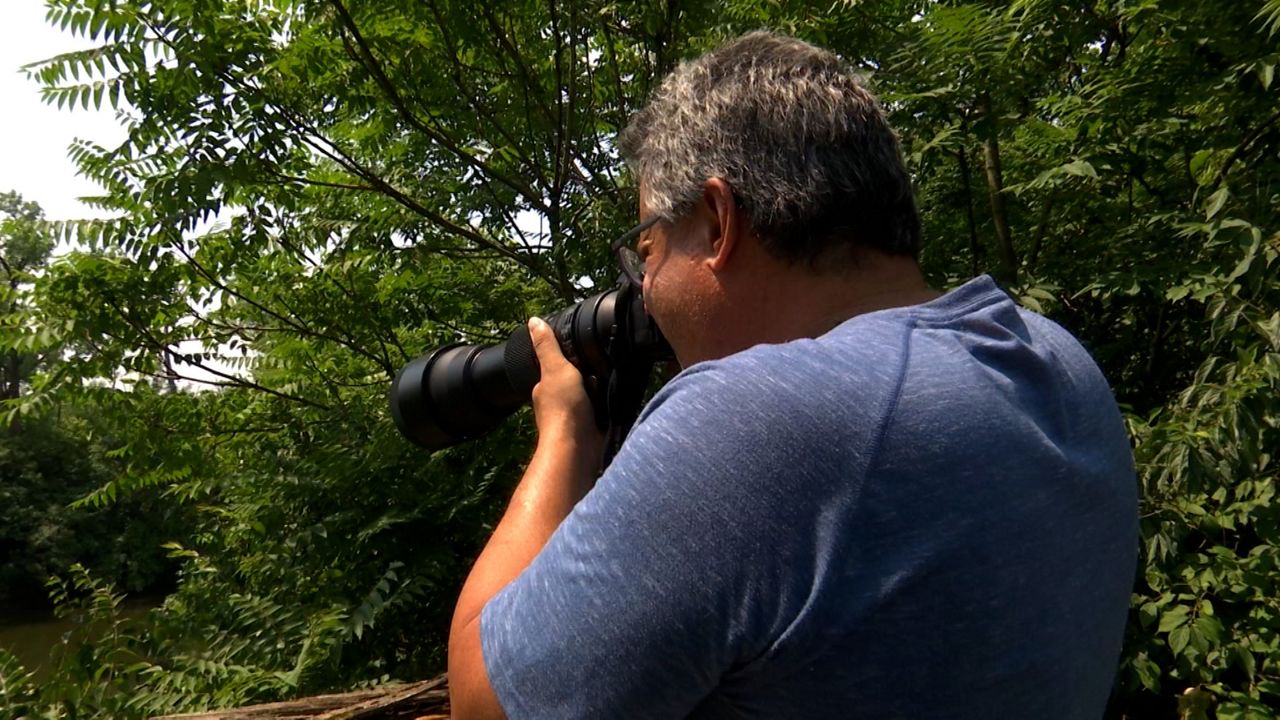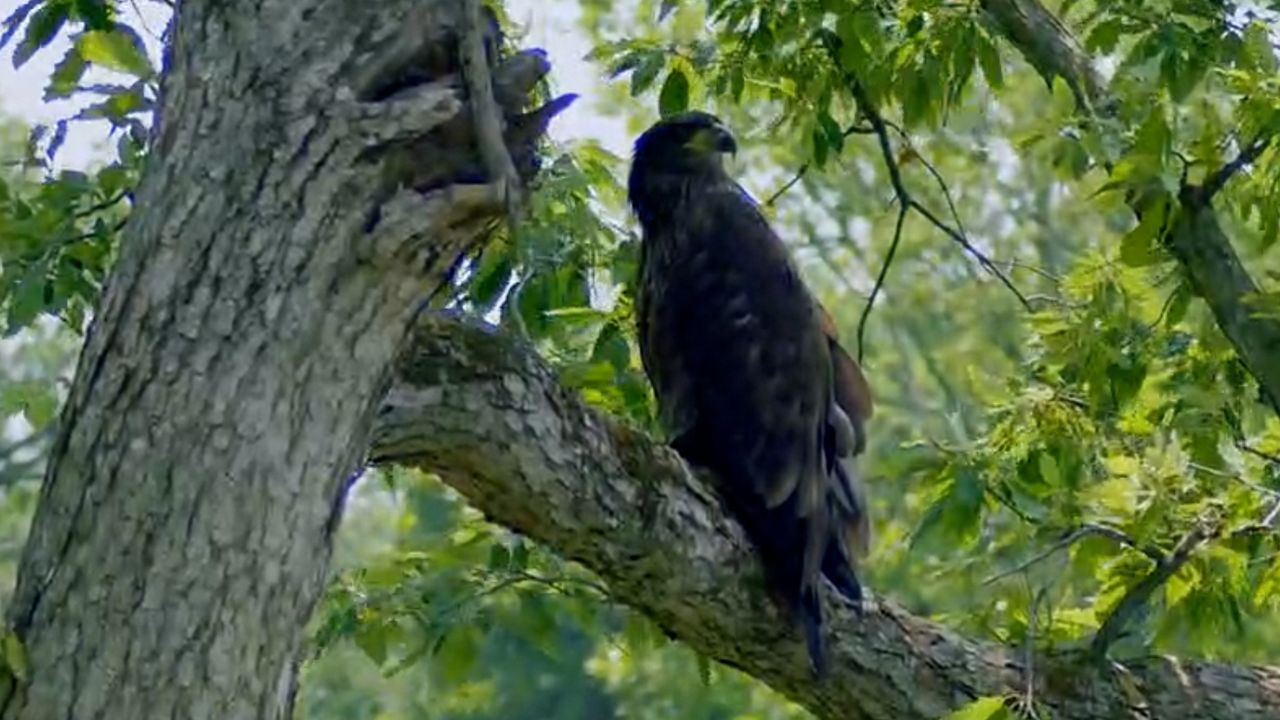COLUMBUS, Ohio – This week, the search was on for the animal that builds the largest tree nests of any bird in North America. The guide — a man with an eagle-eye for photography.
Perched on the side of the Scioto River, Andrew Tarsitano will often be found. With his camera in hand, he's searching for a glimpse of a bald eagle.
There's an eagle's nest near the 1000 block of Dublin Road in Columbus. Tarsitano visits "at least three or four times per week.”

Tarsitano has watched Annie, an adult female eagle, for about three years. She was named after John Glenn's wife, Annie. The eagle has partnered with a male named Apollo. The two produced two juvenile eagles this season named Neville and Luna.
Tarsitano said when bald eagles are born, they don't have white feathers on their head or tail that give them the traditional bald eagle look.
"When they’re born, they’re kind of brown,” he said. “They look more like a golden eagle than a bald eagle and they fully mature at about five years. That's when they get the white feathers."
Tarsitano has enjoyed watching Neville and Luna grow because not long ago, bald eagles were listed at the federal and state level as an endangered species.
Laura Kearns is a wildlife biologist with the Ohio Department of Natural Resources.
“They were delisted from the federal [endangered species list] in 2007 and here in Ohio in 2012,” she said.
Kearns said the population reached a low point in Ohio in the late 1970s.
"There were only four nests in the state and that was in Ottawa County,” she said.

However, a ban on the agricultural use of pesticide DDT is one of the biggest reasons for a turnaround in the population.
“We did a census last year of bald eagle nests and we found over 700 bald eagle nests in the state so that translates to at least 1,400 adults that are breeding, but there are also a lot of immature bald eagles,” Kearns said. “It takes them five years to reach the point at which they are able to breed so yeah, I would say our population is well over 2,000 eagles here in the state.”
That population increase is why eagles are seen in urban areas, like the location Tarsitano often visits.
If anyone finds a nest, the Ohio Department of Natural Resources recommends staying at least 100 meters away and limiting noise to avoid disturbing the bald eagles. Nest locations also may be reported to ODNR to help monitor the population, but it’s not required.



